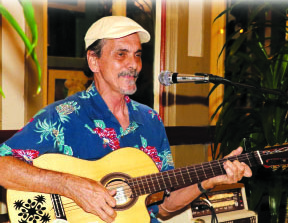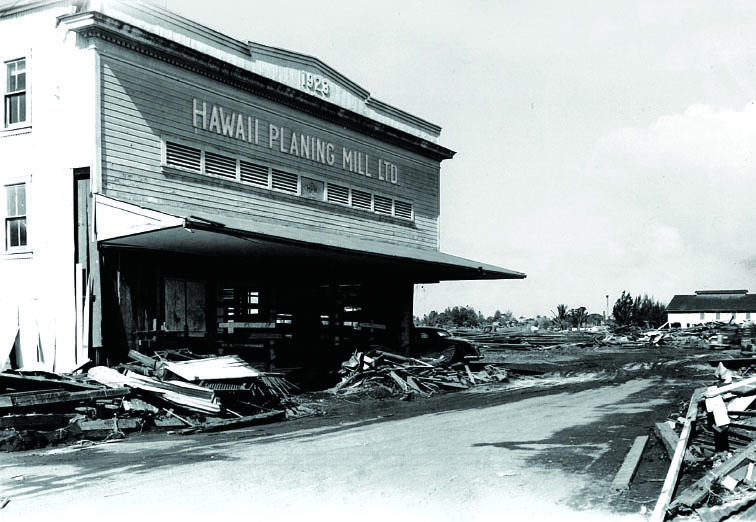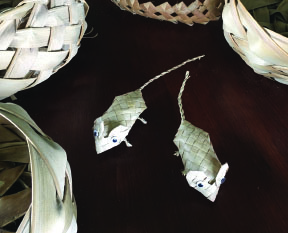
Lauhala Weaving with Kupuna Art Murata: This teacher helped children understand their culture through the weaving craft
By Karen Valentine
As a child who “asked too many questions,” Art Murata of Hōlualoa vowed he would try to answer any child’s question and not be afraid to say he doesn’t know. Growing up with the challenges of being visually handicapped and being Japanese under martial law in Hawai‘i during World War II, Art wanted to be a teacher who would try to answer every child’s question.
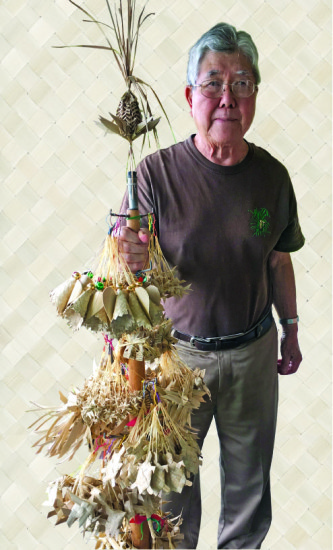
“I was born in interesting times, Art says. “It was 1932, in the midst of the Depression. Growing up I had a firecracker accident at about age eight and lost vision in one eye. I was very small and didn’t have a high regard for myself. I was like Lucy in Peanuts. In sports, I was really bad. I didn’t know why I couldn’t see the ball. It would come and bump me in the head. This is a time when you are curious. I asked a lot of questions that got me into trouble with the teachers. Then the war broke out when I was nine years old.”
Japanese families suffered the most during those years. A nisei (second generation) immigrant, Art’s grandparents, mother and father had come to Hawai‘i from Kumamoto, Japan, to work in sugar plantations.
“Of all the people that came here from Japan,” Art said, “most of them came from southern Japan—Yamaguchi, Hiroshima, Kumamoto and Fukuoka prefectures. Kona is the only place in Hawai‘i where a majority are from Kumamoto.” It was logical, because it is also an agricultural area.
Art’s mother, Yukino Mitsui, arrived as a baby with her parents by boat to the Hāmākua Coast. She was hoisted in a basket up a steep cliff in Kukuihaele as the sea raged below. Even at that age, she had already been betrothed to Art’s father, Hanzo Murata, back in Kumamoto, as was done in those days. As many other workers did, Art’s grandparents escaped their sugar plantation indenture, trekking overland to Hōlualoa, where others from their home prefecture were growing coffee.
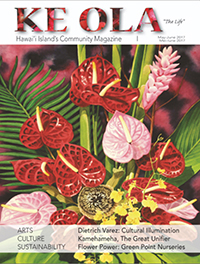
“Unlike many of the other coffee farmers who leased their land, my grandparents bought theirs,” he said of the four-acre parcel where he lives today. “My grandfather died in 1910. A few years later my father came over to meet my mother. As far as the Japanese were concerned, the records were kept in Japan, and as long as they reported themselves married, they were. Japanese aliens were not permitted to become U.S. citizens at that time, so they ignored the whole thing (marriage) until later. In 1952 the law was changed, and Hanzo and Yukino Murata, after living in the U.S. for about 50 years, became naturalized citizens in 1954. They also got a legal marriage certificate when their first child started elementary school, to avoid confusion.”
All the families in the region, he says, developed strong ties with each other as a community. Many belonged to kumiai or kumi, neighborhood support groups. Many of these ties still exist. “That was very important because in Japan, your family unit was extremely important,” Art explains.
Japanese Families Struggled Here
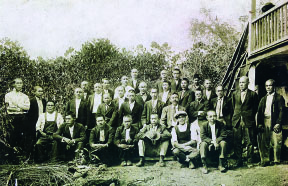
When World War II broke out against Japan, the US was suspicious of the strong family ties of Japanese. Art, who was in elementary school at the time, says, “They took away all the teachers and all the priests, closed the Japanese schools. The war years were not very pleasant. The US Army came over, and the school grounds were full of tents for the enlisted. We held school in Protestant churches or other places. It was illegal to speak Japanese. That meant my grandmother could never go out. Only six aliens were allowed to congregate together. Even at a funeral, only six could come, guarded by soldiers. This was my world when I was growing up. We were required to carry a gas mask. Because I was small, it came to my knees. Our diet had to change, because they decreed we should be planting wheat and corn, what they considered essential crops. They took away the rice fields on O‘ahu. Taro was not allowed to be grown either, because it was not a standard staple. This was martial law. Fish was very important, but they took away all the boats of Japanese fishermen. Japanese made up about two thirds of all the fishermen. Coffee prices went up and down. You would think we were very poor. None of us were wealthy, but none of us considered ourselves poor. We had clothing and we had shelter.
“I liked to read. The youngest of seven kids, I was also lazy. Many times in the evenings, I would climb to the top of a tall tree and watch the beautiful Kona sunset. One of the things I remember is that in the evening the donkeys would call, and the neighbors’ donkeys would answer. That’s how they got the name Kona Nightingales. The other thing I remember as a kid was smelling the wood smoke. All the families had to use wood to heat up the furo (Japanese tub).”
“About the time I graduated high school in 1950, coffee prices were not very good,” Art said. “I was fortunate that my mother was a dressmaker. We were one of the few families that had some cash. Under martial law, they froze the price of coffee to eight cents a pound. There was no way you could survive at that price. There weren’t too many jobs. My father became a carpenter’s helper and my mother a full-time dressmaker. Many of the families in the Hōlualoa area and throughout Kona started to do lauhala weaving because they sold it to the soldiers, making purses, placemats, stuff like that. Some specialized in making hats, but not for soldiers; they were for the farmers and plantation workers.”
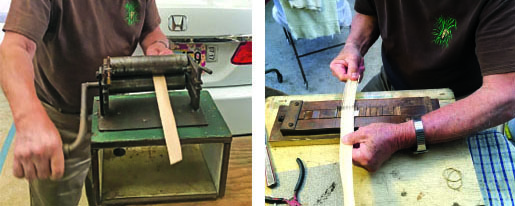
Even with his spotty education, Art still wanted to become a teacher. Knowing that his parents couldn’t pay for that, he worked a year to raise money and was accepted at the University of Hawai‘i at Mānoa. “I didn’t do very well. I decided to go to the mainland and picked the school that had the least amount of Hawaiian students—the University of Missouri.”
He was interested in using the GI Bill to help him, so he volunteered in the army for three years at the end of the Korean conflict, worked for a few years in Chicago, then came back and used the GI Bill to finish up at Mānoa.
“Just about the time I finished, I got married to my wife, Sachie.” Together they had three sons who have given them five grandchildren. Albert is a tennis pro in Honolulu, Stephen a welder in Kona, and Corey is a librarian at the University of Washington.
Today, a dedicated member of the Kona Weavers, Art began weaving lauhala when he wanted to expose his seventh-grade students at Konawaena High School to their Hawaiian cultural heritage.
Art was hired at Konawaena High School in 1963 and worked there until retiring in 1987, teaching social studies and other subjects, including world history.
“The first year was weird,” Art relates. “I ended up with one general math, two English, one general science, one biology and one social studies class, and my field was only social studies, so I was terrible.”
The school’s world history class, in his opinion, was lacking. “There was nothing in the curriculum about Asia, and most of the students were of Asian descent. So I devised my own world history, adding Asian countries like India, Japan, Korea, China. This made me realize you have to give people knowledge about their own culture.”
It was a time in the 1970s, just before the Hawaiian Renaissance, which passionately revived interest in Hawaiian culture and history. At that time, Art says, the schools had decided to teach Hawaiian history and provided a syllabus for him to follow in teaching his high school social studies class. Art thought it was wrong that the history lesson was designed to begin in the 1890s—after Hawai‘i had fallen under the control of the United States—and not earlier.
“When I was told that, I decided, ‘heck with that, I’m going to devise my own.’ So he asked to teach seventh grade, which allowed him more freedom.
Art says he’s always been something of a rebel, which has gotten him into trouble—such as the time he invited the SDS (Students for a Democratic Society) anti-war activist group to speak to his class. “I didn’t know I had to get clearance!”

His seventh-graders, he said, needed some activity to remain engaged and so he gave them lauhala weaving projects. He himself had to learn the skill from others in the community who had perfected the art.
“I’m not an expert in lauhala,” Art says. “One thing I’m more expert in is coconut leaf weaving. You get one frond of coconut and you can do a lot with it.”
During that time, Art was a volunteer at the Pu‘uhonua O Hōnaunau annual cultural festival, where he helped teach people how to make ti leaf sandals and coconut leaf bowls.
“Every year in the seventh grade I would get the kids to make all kinds of Christmas ornaments—fish, birds, honu. I would take a bunch of kids to the King Kamehameha Hotel in Kona and they decorated a tree for them. That was the culminating activity for the kids.”

Art retired from teaching in 1987, although he still supplies lauhala ornaments to the national park at Hōnaunau.
“Why I’m weaving so much now is that Pu‘uhonua is now allowed to sell things that are culturally relevant, so the park contracts with weavers here because it also has to be made in Kona.”
His active weaving group, Ulana Lauhala Hoaloha (Lauhala Weaving Friends) nicknamed the Kona Weavers, meets weekly at the Kona Koyasan Daishi Mission in Hōlualoa. ❖
